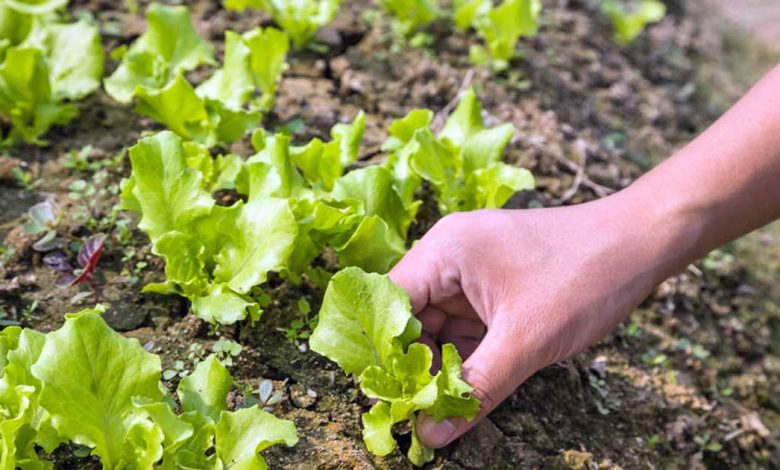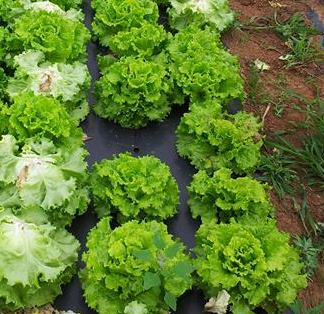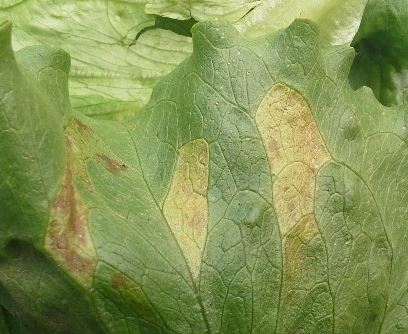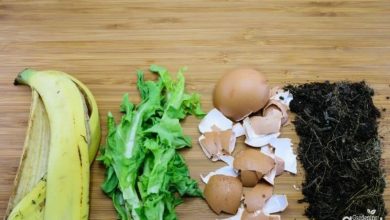Grow Lettuce in the organic garden: Plant lettuce successfully

Another post about growing organic vegetables! This time to learn how to grow lettuce, one of the most common vegetables in gardens and also easy to grow. To plant lettuce and be successful in its cultivation, you must first know its characteristics and soil and climate requirements. Let’s see it!

Characteristics of lettuce
Lettuce is part of the Compositae family, which you should take into account when planning the most beneficial associations and crop rotations. However, it associates well with most garden plants because it is fast growing and shallow rooted. You can intercrop lettuce between other longer cycle crops, such as onions or tomatoes. It also goes very well with carrot, leek, melon radish or cucumber.
How and when to grow lettuce in the garden
Let’s first look at the climatic requirements for growing lettuce. There are varieties adapted to different seasons and climates (spring, summer, autumn, winter lettuces) so lettuces can be grown almost all year round, as long as there is no risk of frost -in this case, the hot beds, and should be grown under plastic, glass bells, thermal blankets or something similar to insulate from the cold.
You also have to be careful in the high temperature season, because with the heat it is easy for the lettuce to spike (premature flowering: a stem with flowers grows from the center of the bud), and this will make the leaves become more bitter and hard. You can avoid this by planting them in a place that is not exposed to the sun all day or by using summer varieties, with later bolting.
Growing lettuce: which variety to choose
There are many varieties of lettuce, some more «delicate» or susceptible to bolting than others, some resistant to cold, others to heat (spring, summer, autumn or winter varieties) and of different shapes, sizes and colors, so they can also be combined and serve, in addition to food, as an aesthetic element in an ornamental garden-orchard
like the one in the photo.

(If you like the idea, you may be interested in an article I wrote about Decorative Gardens).
The lettuces must be “heady” with a fairly closed and tight head (Iceberg lettuce, Trocadero, Betavia, Gotte, Queen of May, Appia …); more elongated, with a less consistent bud and less close-knit leaves (Romana -type lettuce varieties); or “loose-leaf” or “cut and sprout”, in which the whole lettuce is not harvested, but rather the leaves are cut one by one when they are ready (Lollo Rossa, Red Salad Bowl or Smooth-leaf Rubia).
Plant lettuce in the garden step by step
Prepare the substrate and fertilize
They need a soil with lots of but well decomposed organic matter, so it will do great in the rotation after a crop that has been manured.
It is important to often enrich the substrate in organic matter. If you want to grow organic lettuce, you can not add artificial fertilizers, it is best to fertilize with well decomposed compost before planting and also during the development of the crop, especially if you have poor soil.
Keep in mind that lettuce is more demanding during the bud formation period, and that in the last weeks before harvest it is not necessary to fertilize because the absorption of organic nutrients is slow and they would be wasted.
Sowing and planting
Sowing is usually done in seedbeds (sowing depth: 1 cm) and after 20-30 days, when the lettuce has 5 or 6 leaves and about 5 cm in height, it is planted in the definitive container or soil.
After making the lettuce seedbeds (you can see some tips in that link), and after the plants are a bit grown, it’s time to transplant or plant lettuce in the final land. In this video Álvaro teaches us how to do it:
If you use pots or containers, they should be 25-30 cm deep, and the distance between lettuces should also be 20-30 cm, except in «mini» varieties, which require less space.
If you prefer (and as long as the weather is good) you can also do direct sowing during the warm seasons.
lettuce irrigation
Frequent watering, but not too abundant so that the upper part of the substrate does not become waterlogged and dries quickly, preventing fungi from proliferating (better to water in the morning).
Cultivation work
Continuous weeding is necessary to prevent unwanted weeds from competing with the lettuce or becoming the perfect haven for pests.

Mulching or mulching with grass, straw or other material is useful to conserve moisture in the substrate without the leaves getting wet from contact with it.
Lettuce pests, diseases and other problems when growing lettuce
One of the most common lettuce pests are snails and slugs. An effective trick against them is to place small containers or glasses with beer, traps that will attract them and make them sneak inside and not be able to get out again. You can also place tiles scattered face down in the garden, so that snails and slugs take refuge in them and the
Whiteflies, leaf miners, aphids and thrips can also affect lettuce. In addition, they can transmit viruses, such as the Lettuce Mosaic Virus (imv) or the Tomato Spotted Scorch Virus (TSWV), so you should be careful with them.
Mildew and Botrytis are fungi that can damage lettuce leaves, especially the outer ones, or cause rot at the base of the plant, so you will have to be careful with soil moisture. The surface should be as dry as possible, hence the importance of frequent but brief watering. Also make sure that the leaves are not stuck to it, tying the buds if necessary (bleached).
Birds are also a problem because if they intercept them they will bite their leaves, so if your lettuces are being attacked by birds you should protect them with a mesh or similar.

When to harvest lettuce
You can enjoy lettuce from your garden practically all year round! You have to stagger the sowings so that the lettuces do not accumulate, planting new ones as you cut the ones that are ready. Also play with the choice of varieties depending on the climate or the space available in the garden at each time of year.
When the lettuce is ready to harvest, 50-90 days after sowing (depending on the variety and climate), it is cut at the base at ground level with the help of a knife and the outer leaves are removed.
You can uproot what remains on the ground and plant a new seedling in the space that has been left free, or if you make a cut at the base, the reproduction of the previous lettuce is favored, as we saw in the post about vegetables. that grow or regenerate.


![Photo of Kalanchoe cuttings: [Grafts, Time, Rooting and Planting]](https://www.complete-gardening.com/wp-content/uploads/2022/08/kalanchoe-cuttings-grafts-time-rooting-and-planting-390x220.jpg)

![Photo of How to Plant Chives in [13 Steps]: When, How and Where?](https://www.complete-gardening.com/wp-content/uploads/2022/08/how-to-plant-chives-in-13-steps-when-how-and-where-390x220.jpg)